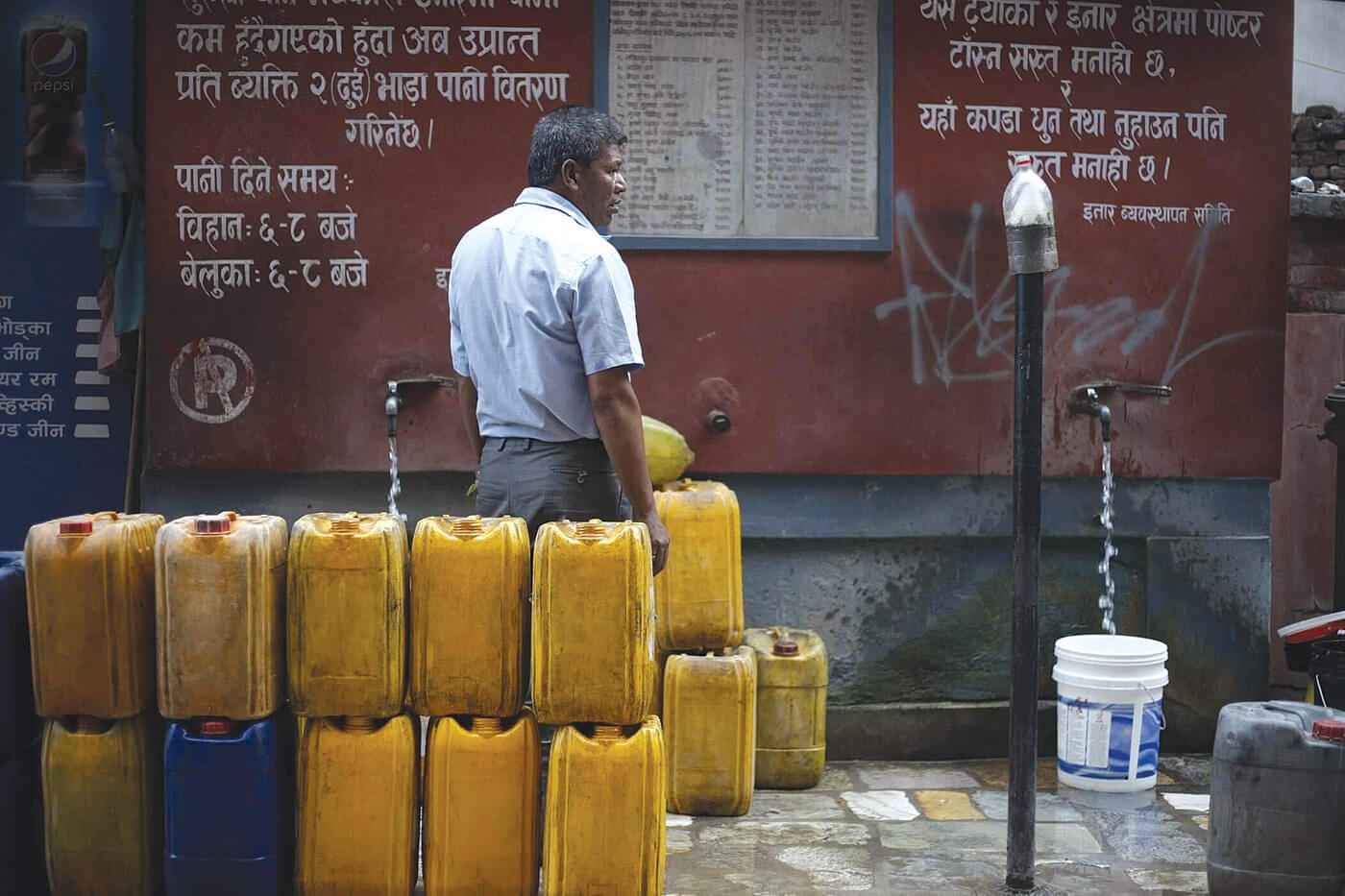Where is the monsoon this year?

In January 2018, Cape Town faced the possibility of executing a ‘Day Zero’ water plan: the city’s residents would have to queue daily for rationed municipal water supply. The reservoirs that served the city were almost empty. Fortunately, rains and lowered water use helped avert the crisis. A year later, Chennai, India’s sixth largest city, came near to Day Zero, too. Last minute rains again eased the emergency.
In 2015, Chennai faced devastating floods. How could a region that was submerged four years earlier suffer such a serious water crisis? Despite floods and droughts becoming a regular feature of South Asia’s climate, none of our governments have learnt lessons to conserve, harvest and store water. Misuse and inefficiency are high, and precious water is blatantly abused.
Urbanisation, encroachment of lakes, wetlands, ponds, and open spaces that served as flood buffers have made inundation worse on one hand, while depleting natural storage systems at a time when water runs out like now. As Chennai expanded with new industries and IT-led growth, the wetlands were converted into housing.
In January 1995, 40 hydro-geologists, social scientists, water analysts, economists, political scientists and agriculturalists had gathered in Chennai to discuss the political economy of water in South Asia. The conference, convened by the US Social Science Research Council, had concluded that relatively wealthy middle class urban domestic users appeared to have top priority over water, industries get next priority, irrigation users are next and rural domestic water users and the urban poor are at the bottom of the rung.
Twenty-five years later, nothing seems to have changed. In fact, this hierarchy of access to water is now even more entrenched, and continues to promote the transfer of pumped water from rural to urban areas. Extraction rates exceed recharge and groundwater storage is gradually depleted.
Water problems in India, Nepal and the rest of the subcontinent are a result of a complex interaction among urbanization, agriculture, industries, changing water use, and impact of the climate crisis on precipitation, rising temperature and humidity. By 2030, 40% of South Asia’s population will be living in cities. Urban settlements require more water supply in concentrated areas. Rapid urbanisation and the increases in demand bring new challenges as higher income families use more water to meet sanitary functions producing more waste water.
The water challenges in Nepal is no different. Himalayan glaciers and snowpacks are melting faster, the springs in the mid-mountains are going dry at an alarming rate while groundwater levels are receding in Nepal’s bhabar, Tarai and across the border in India. Collectively these changes will lower base flows with profound implications for water security across the Indo-Gangetic basin.
The current crisis is an outcome of the relentless pursuit of a water development and management model that evolved in an era before the climate emergency. It assumed the unlimited availability of water and focused on supply side solutions, without heeding to demand management and improving water governance. This model has dealt with rainfall, river and groundwater separately, neglecting the water cycle and its intrinsic function in nature. This fragmented approach continues.
This water management model is not appropriate to deal with the water emergency. We need to change our approach to adapt to monsoon rains becoming more erratic, as they have this year. Innovative rainwater harvesting practices, promoting a judicious mix of surface and groundwater sources, and managing increasing water demands is the way to go. The Chennai crisis this year will be replicated in Delhi, Patna and Kathmandu.
And it is not the quantity of water that is a problem, the poor quality of available water is an equally serious challenge that needs to be solved with low-cost filtration systems for hundreds of millions of underserved families in the region. Disposal of human waste using treated clean water, in particular, needs to be systematically replaced. Untreated sewage pollutes freshwater sources and reduces available supplies. Already dysfunctional water treatment plants significantly push up treatment costs.
Solutions must be based on larger societal commitment achieved through regular consultation between individuals, households, the community, the market and the state about water science, supply options, reduced use, and water conservation, and fundamentally re-crafting the institutions that govern and allocate water. Only this can potentially usher in a people-centered water stewardship and management that will include preservation of open spaces, water bodies and aquatic beings.
Ajaya Dixit is Executive Director of Kathmandu based ISET-Nepal. His monthly column Climate for Change in Nepali Times deals with the impact of global warming in Nepal and the region.




